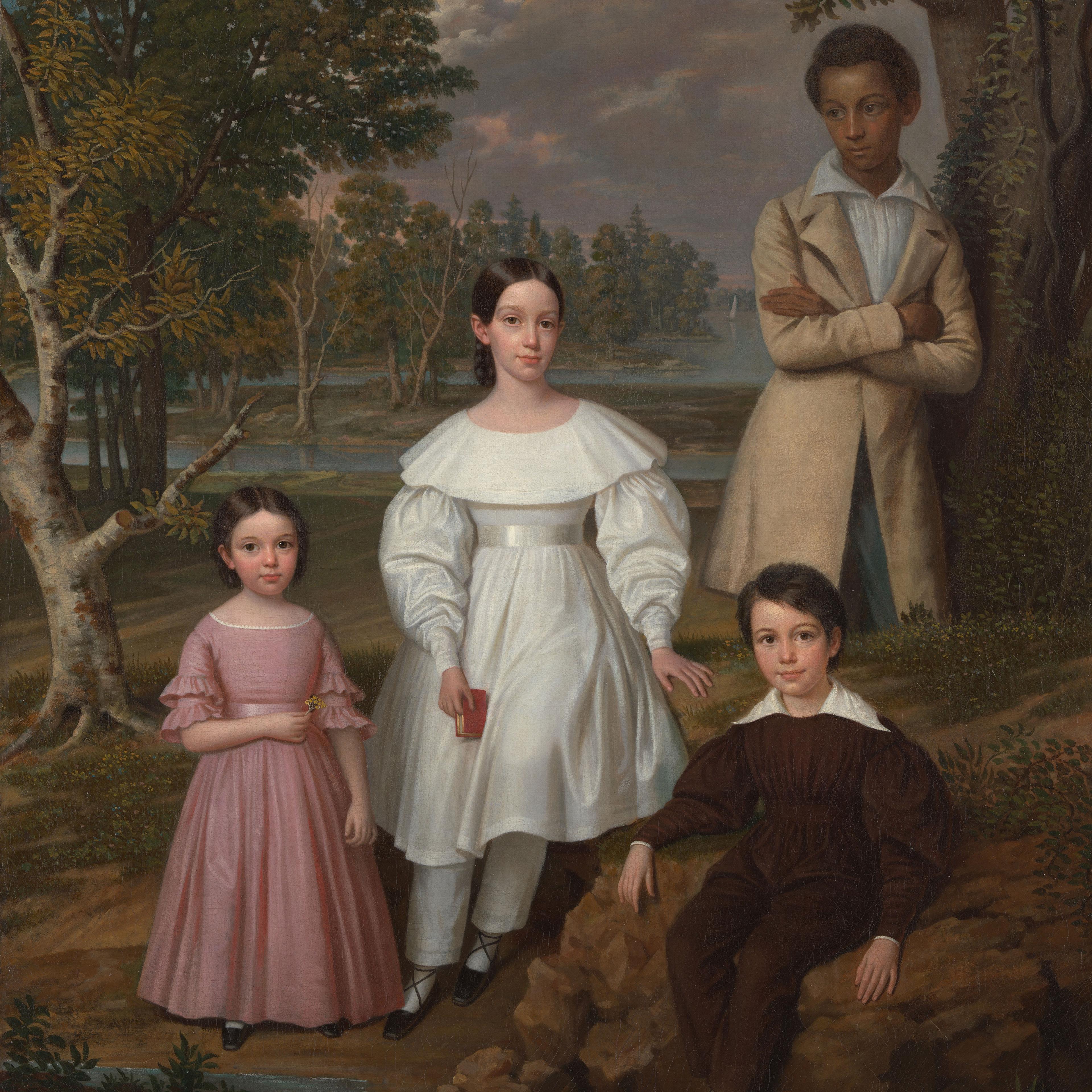Bélizaire and the Frey Children is a rare American portrait of an enslaved Black subject depicted with the family of his enslaver. Attributed to the leading French émigré portraitist working in 1830s–50s New Orleans, the painting illuminates the complex relationships of intimacy and inhumanity that defined domestic enslavement. The portrait’s later history also reveals the consequential afterlives of slavery. At the turn of the twentieth century, the prominent depiction of the enslaved Afro-Creole teenager, Bélizaire (ca. 1822–after 1860), who is positioned against a Louisiana landscape above the three young Frey siblings presumably in his care, was deliberately concealed—likely by a member of the Frey family. His figure was only revealed after a careful conservation treatment. Archival research has also recovered the identities and some of the histories of all four subjects. Bélizaire survived the Civil War and lived to experience freedom. Both Frey sisters died the same year the portrait was painted, their brother some nine years later.
New Acquisition
